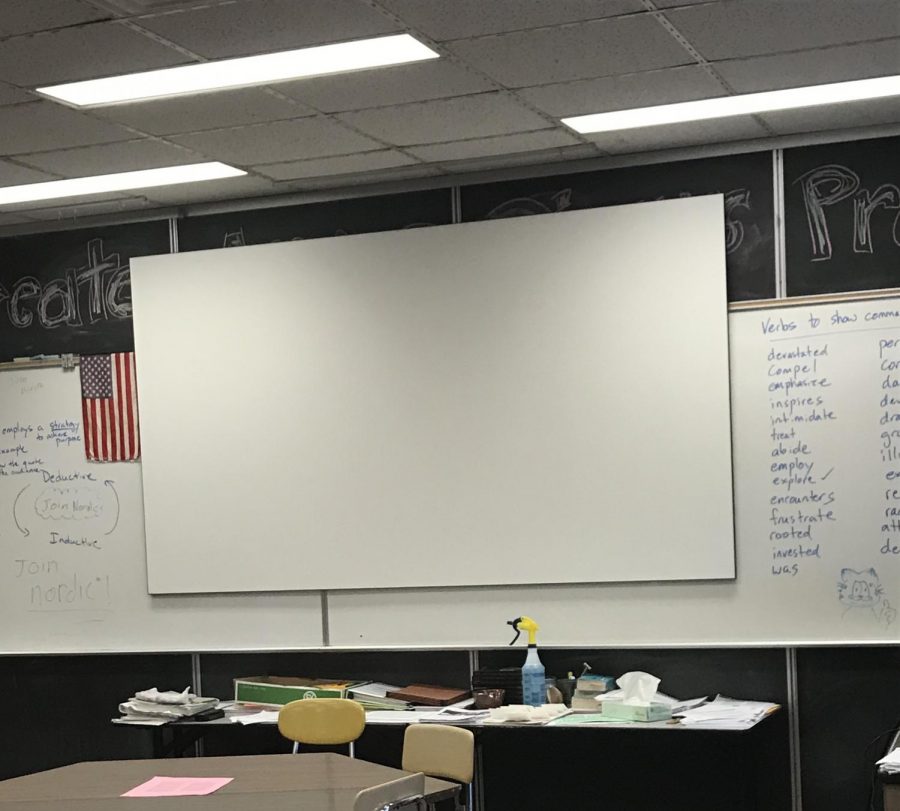Where are the Smart Boards going?
October 31, 2018
Have you noticed that the Smart Boards in some of the classes have disappeared?
Teachers will have the choice of using new technology this school year (2018-19). However, all Smart Boards will be gone by the 2019-20 school year. The Smart Boards allow teachers to stand at the front of the room and write on the board, which they can easily modify and edit. Unlike traditional white boards, these Smart Boards are capable of opening files on the computer which helps display more information quicker. But now these Smart Boards are being replaced by a tablet which teachers will carry around the room, while their tablet screens are then projected onto a new and larger board. This decision to switch was made across the Anoka-Hennepin School District.
Mr. Bayer, an Engineering teacher, stated that he received an email that asked whether or not he used his Smart Board. He chose yes, but found that in the poll only 40% of Blaine High School teachers actually use its capabilities. Mrs. Bottineau, a Social Studies teacher, also said that she received this email and thought that the poll wouldn’t affect anything. Mrs. Bottineau also mentioned that this change was extremely abrupt and is still very unclear for many of the teachers. Mr. Bayer is extremely upset because of the lack of information about the change. When Mr. Ziegler’s math class polled students, every single student confirmed that their teachers don’t like this change. When using the tablet, Mr. Ziegler said there was there was a delay between him writing on the tablet and it showing up on the board. After using the new tablet for only 3 days, he switched back to the Smart Board.
Mrs. Athman on the other hand likes this change. When the board was first installed in her room she originally hated it. It took her awhile to adjust to the change, but now enjoys it because she is able to be more interactive with the classroom. The only thing that she now dislikes about the tablet is the weight, and she proposes that podiums should come with these tablets. Mr. Loo, an English teacher, sits in the middle. This change neither hurts him or helps him. To him, all of the things he’s needed to show to the whole classroom were done from his desk.
Mr Paske, the school’s Principal, believes in the research behind this style of teaching. Mr Paske explained to me that the mobility of the tablet allows the teachers to get closer to students, and will improve the learning in the classroom by forcing students to interact. He also stated that some classrooms, such as special needs, will be allowed to keep the Smart Boards because the students use them daily.
From a student perspective I dislike this change. This new style of teaching not only confuses the teacher, but also the students. Like most students, watching a video at home isn’t nearly as effective as having a teacher in the classroom. So when the teachers are writing on their tablet throughout the room, I find that all I end up doing is staring at the board in the front of the room. This starts to feel like I’m staring at a video and I become disengaged. Paying attention to where the pen started and ended is very important as well. Becoming distracted or needing to write something down will cause students struggle to find where they left off. This is because the teacher isn’t up at the front to point to the things they are talking about, so it can be very hard to follow what they are referencing to on the screen. What most students don’t realize is that the teacher shows flow through their work using body language, and this also allows them to go back to what they said without making excess markings which clutters their screen. It seems like the school district is trying to fix something that isn’t broken, which is counter productive most of the time.
In the end the Smart Boards are currently being liquidated for money to buy these new tablets and boards. The program that the Smart Board runs was a contract and it will expire during 2019. Mrs. Bottineau said that these new boards in the classroom are extremely cheap, but the projectors (which connect to the tablets) are a major upgrade that cost much more money than the old projectors.




